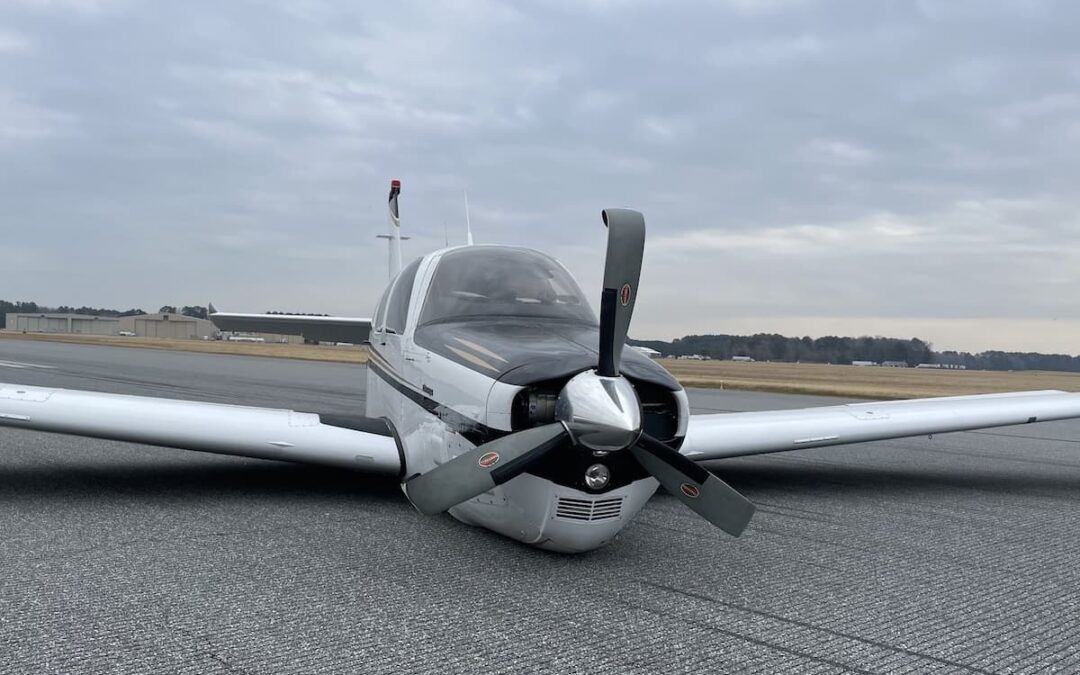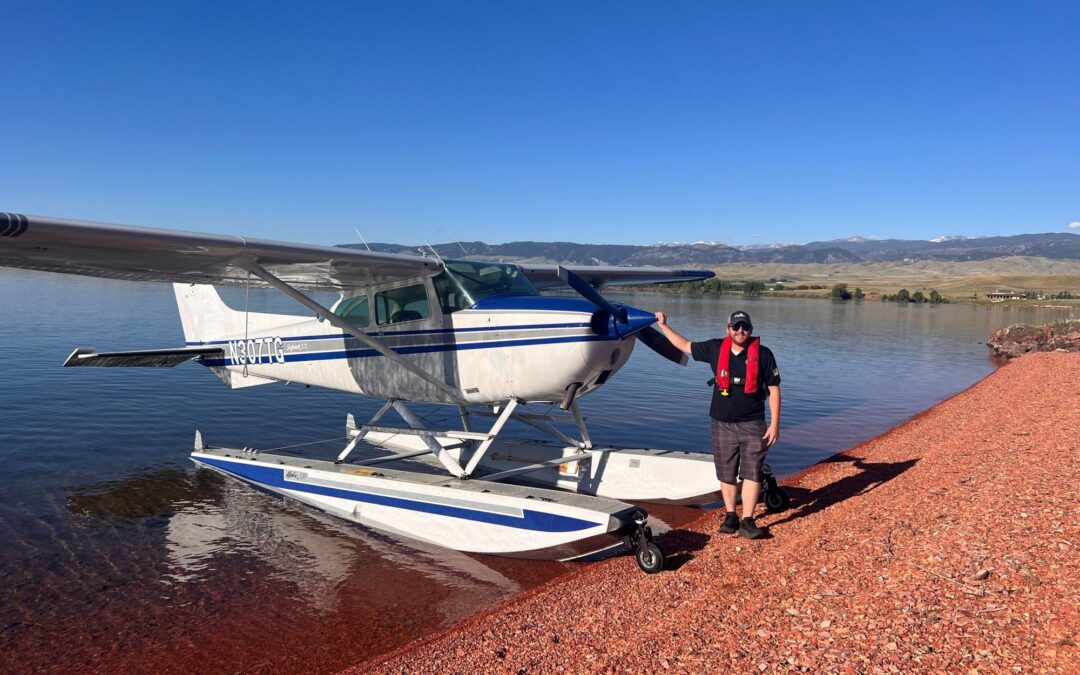“Out of gas in air. God help us,” texted the Cessna 172 passenger to a family member. It was what the British call Boxing Day on December 26, 2021. The pilot was the passenger’s boyfriend. They were flying at 4,000 feet over Ash Flat, Arkansas. Night was falling. She would send no more texts.
They had spent Christmas with his family in Illinois and were flying home to Arkansas. It’s about 850 nm from the Gen-Airpark Airport (3GB) in Geneseo, Illinois, to the Walnut Ridge Regional Airport (KARG) in Arkansas. He planned to stop for fuel at the Bowling Green Municipal Airport (H19) in Missouri. It sounds like a beautiful VFR flight—low, slow, and watching the countryside change from fields to scenic hills. The boyfriend was a VFR private pilot with about 380 hours logged, properly certificated, and current.
The airplane was his 1964 Cessna 172 E, white with blue and yellow trim. The Skyhawk was cared for, and he had recently added a few new upgrades. It wasn’t equipped for instrument flying but did have an FAA-approved supplemental type certificate (STC) to use automotive gasoline. Being able to use regular gas poured into the tanks from portable jerrycans, rather than needing aviation 100LL, provides a lot of flexibility. But it did mean the National Transportation Safety Board (NTSB) couldn’t form an exact fuel quantity history from FBO records. However, from the passenger’s texts, we know that they knew fuel was running low.
Approaching their destination, the pilot asked Memphis Center ATC for an airport weather report. The controller read the current special METAR observation: 11007KT 1/2SM FG OVC002 A2987. That’s half a mile visibility in fog, with an overcast layer at 200 feet. This only would have confirmed what the pilot was looking down on from the Cessna—solid cloud between him and the airport. For a non-instrument-rated pilot in an airplane not equipped for instrument flight, the blanket of white was unflyable.
The pilot S-turned and circled the area several times at about 2,500 feet. The passenger texted. “Need prayers ASAP bad. Ran into weather. Can’t see anything.” The pilot requested weather reports for Paragould (KPGR) and Jonesboro (KJBR) airports. He told ATC he had less than a quarter tank, or about an hour of fuel remaining. There was VFR weather to the west, so they turned right, climbed up to 4,000 feet, and headed west.
The plan was to land at Sharp County Regional Airport (KCVK) in Ash Flat. The girlfriend texted, “We love you guys,” and more worryingly, “It’s not good at all.” When the airplane was about 3 miles from KCVK, it turned right, gently descended, and flew a track consistent with an attempt to make an approach. However, the weather at the field was low IFR. One witness on the ground described it as “heavy fog” with only maybe 500 feet visibility.
“The airplane then entered a tight left turn and traveled to the north,” the NTSB reported. “During this time there were abrupt changes in ground speed, altitude, and the direction of flight. The airplane entered at least one sharp counterclockwise 360[-degree] turn and flew north-northeast until track data was lost.”
The Skyhawk departed controlled flight. It crashed into a heavily wooded area of the Ozark Mountains and was left mostly destroyed by a high-energy impact sequence. It was not survivable.
After the accident, there were no signs of fuel in the tanks. No other mechanical abnormalities with the airframe or engine were present. The NTSB recently published the probable cause as “the non-instrument-rated pilot’s decision to continue visual flight into an area of instrument meteorological conditions, which resulted in a loss of control due to spatial disorientation. Contributing to the accident was a loss of engine power due to fuel exhaustion.”
The defining event was indeed losing control of the airplane, but before this point the pilot had lost control of the situation. A VFR-only pilot, he had put himself and his girlfriend in a VFR-only airplane above a vast sea of solid clouds, a covering that hid semi-mountainous terrain, with limited fuel to fly somewhere better.
The fog and low clouds didn’t have to be a surprise. The destination airport lay under a warm frontal boundary. There was an AIRMET advisory for the accident area. Issued that afternoon, it forecast IFR conditions in mist and fog through 9 o’clock at night. There was also a Center Weather Advisory (CWA) forecasting low-IFR conditions for northeastern Arkansas that afternoon and evening. Unfortunately, the accident pilot did not request weather information from Leidos Flight Service or view weather images via his ForeFlight subscription before the flight. But at some point he must have noticed the increasing undercast as they flew south. It’s not sophisticated risk management to “always have an out” or “not paint yourself into a corner.”
A whole aircraft parachute system would probably have saved their lives. Or, more simply, having enough gas to go another 45 miles to the west would certainly have resulted in a safe landing. At Baxter County Airport (KBPK) in Midway, Arkansas, the weather was reported as visibility 10 miles or greater, broken ceiling at 2,300 feet agl. The last text message received on the passenger’s phone from her family was, “We love y’all … Did y’all get landed?” It went unanswered.
French pilot Antoine de Saint-Exupéry, in his 1939 book Wind, Sand, and Stars, wrote that flying over Spain was all very well, very dashing, “but you want to remember that below the sea of clouds lies eternity.”
The post ‘Out of Gas in Air. God Help Us’ appeared first on Plane & Pilot Magazine.




